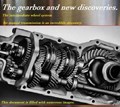The introduction.
Transmission systems are essential components in many machines and vehicles that transmit and adapt movement.
These systems allow speed and torque to be varied between different components to achieve desired performance and efficiency.
They can be found in a variety of applications, from automobiles to industrial machinery to wind turbines.
Transmission systems are used to change the speed and torque to achieve the optimal operating point for different requirements.
The basic principle of a transmission is that it connects input and output shafts together, modifying the rotational characteristics.
This is done using gears of different sizes and profiles that mesh together and allow energy to be transferred in an efficient manner.
There are different types of transmissions including manual transmission, automatic transmission, continuously variable transmission (CVT), planetary gearbox and many more.
Each type of transmission system has its own advantages and disadvantages in terms of performance, efficiency, complexity and applicability.
Non-fiction books about gear systems could better explain topics such as the basics of gear designs, how different types of gears work
but one of them is this document.
The calculation of torques, effects on mechanical efficiency and other topics are also covered here.
modern developments such as electronically controlled transmissions or hybrid drives, like its developers
Carl Benz is one of them.
He is also mentioned here like other masters of mechanics.
It is explained and treated in an exciting way.
These books could appeal to engineers, technicians, students and anyone interested in mechanics and mechanical engineering, giving them a deeper understanding of the fascinating world of transmission systems.

